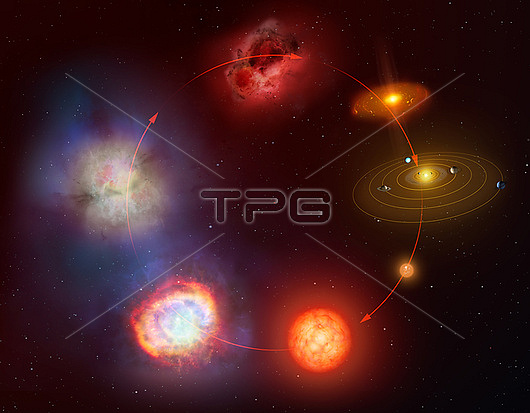
Life cycle of a sun-like star, illustration. The cycle begins at left centre with a supernova. This detonation compresses a nearby gas cloud (top) which begins to contract to form a globule. Rotation and contraction causes this to form into a disk called the solar nebula, with the Sun at the centre. Eventually the material in the disk agglomerates to form planets (right centre). Around 6 billion years the later, the Sun expands to become a subgiant (planet no longer shown for clarity). This is followed by the red giant stage (bottom), and then a planetary nebula as the red giant expands and ejects its atmosphere into space. The material is thrown back into the interstellar medium, and the cycle begins again.
| px | px | dpi | = | cm | x | cm | = | MB |
Details
Creative#:
TPG32186653
Source:
達志影像
Authorization Type:
RF
Release Information:
須由TPG 完整授權
Model Release:
N/A
Property Release:
N/A
Right to Privacy:
No
Same folder images:

 Loading
Loading